
Yes, people wore sneakers before 1985. But the release of the original black and red Air Jordan 1 that year changed the way sneakers would be consumed, viewed and marketed from then on out. Their namesake, Michael Jordan, then a rookie for the Chicago Bulls, would go on to become the best basketball player ever, and his sneakers would both create sneaker culture and dominate it for years to come. Tomorrow, on Sept. 3, the black and red Jordan 1 will be reissued for the sixth time, and the hype around it is higher than ever.
It all started when the NBA decided to ban Michael Jordan's black-and-red sneakers his first year in the league because they didn't have enough white on them. But neither Michael nor Nike budged. As he continued to dominate the 1984-1985 season, he continued to wear the shoe, paying a fine of $5000 each game. Nike footed the bill, but back then, it wasn’t exactly the financial juggernaut that it is today; paying that fine every game hurt, but it paid off. The act of rebellion set the tone and legacy for the Jordan Brand to be the $2 billion-plus company they are today.
But it's not only that great backstory that made the shoe win everyone's heart—it's also a damn-good looking shoe. There weren’t many shoes on the market that was proportioned like it was. The toe was slim, yet wide, and arched dramatically up the tongue into a beautifully cut collar line that flowed into the ankle. Even more revolutionary, though, was the color blocking. Eschewing the safe white and gray spectrum that dominated footwear at the time, Nike designed the sneaker so that it could be blocked in many ways, from mild to wild. Dozens of releases with different color schemes followed, but the iconic black-and-red “Banned” colorway is still a touchstone for the Jordan Brand consumer. It's more than a shoe — it's an attitude.
Jordan Brand has reissued the shoe five times since its initial launch in 1985 to help revive that attitude. In 1994, they marked the 10th anniversary of the the shoe with a re-release. In 2001, as retro product really started to take off for the brand, they did it again. In 2009, they commemorated Michael’s 63-point onslaught against the Celtics with another release, followed by two more in 2011 and 2013. And now, the Banned Jordan 1 is born again again as part of the brand’s “Remastered” program.
But the shoe's new iterations aren't totally identical to the first shoe that launched the brand back in 1985; each has its own twists, some flawed, some not. Below, we break down the key differences between the legendary black and red Jordan 1 and its many sequels.
A special thanks to Flight Club for providing the sneakers.
1985
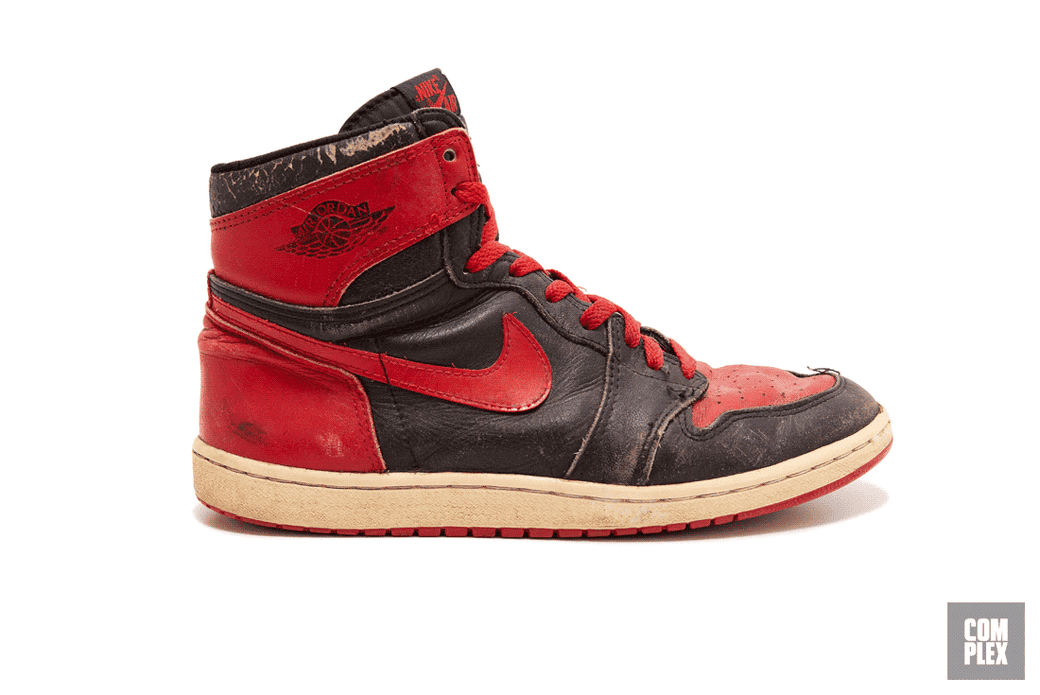
One of the most interesting things about the initial Air Jordan 1 launch is that it was actually produced in multiple factories. This is common practice in the industry, as it helps brands increase volume quickly enough to keep up with demand. But it can bring unforeseen issues too. In the case of the original Air Jordan 1, it caused the red leather to vary slightly from factory to factory. Depending on which factory your pair came from, the red could be dark, light, or slightly pink. The reissues don't have this discrepancy. Other smaller details—height, leather quality, shape, and a Nike Air logo on the tongue instead of a Jumpman—separate the original from its newer descendants as well, as we'll elaborate below. This is the model that set the standard, the one all retro versions would be held up against. Luckily, Jordan Brand got things right the first time around.
1994
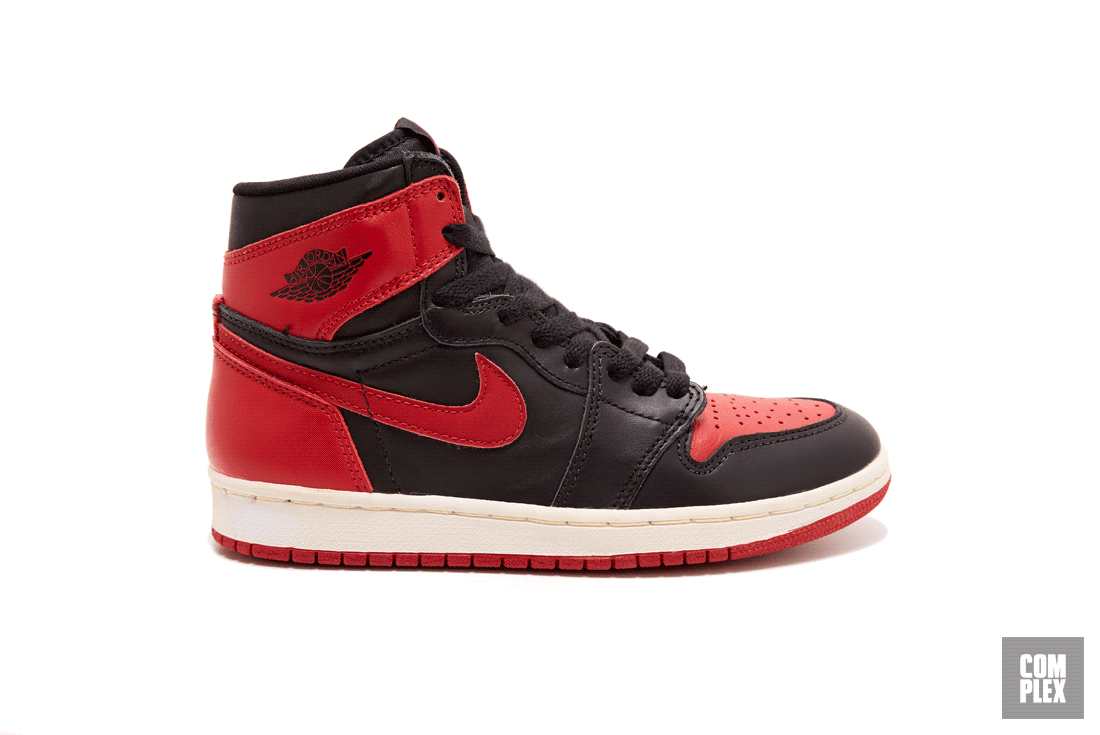
Back in 1994, when Nike decided to re-release the Air Jordan 1 (along with the II and III) to commemorate the brand’s tenth anniversary, they didn’t sell very well. For whatever reason, the market just wasn’t ready for it. But for discerning buyers, one issue was that the shoe wasn’t identical to the original. The cut of the upper’s design pattern was nearly dead-on to the original version, and so was the shape and sole unit. It had the "Nike Air" logo, but Nike made a deviation in materials. The original Jordan 1 was predominantly leather; for the reissue, the decision was made to switch to nubuck for the red swoosh. With the original Air Jordan 1 still fresh in people’s minds, it was an unwelcome change. On top of that, retro culture was still niche—everyone was more interested in chasing down the latest Air Jordan models. Either way, it negatively affected the sales of the Air Jordan 1's first bringback.
2001
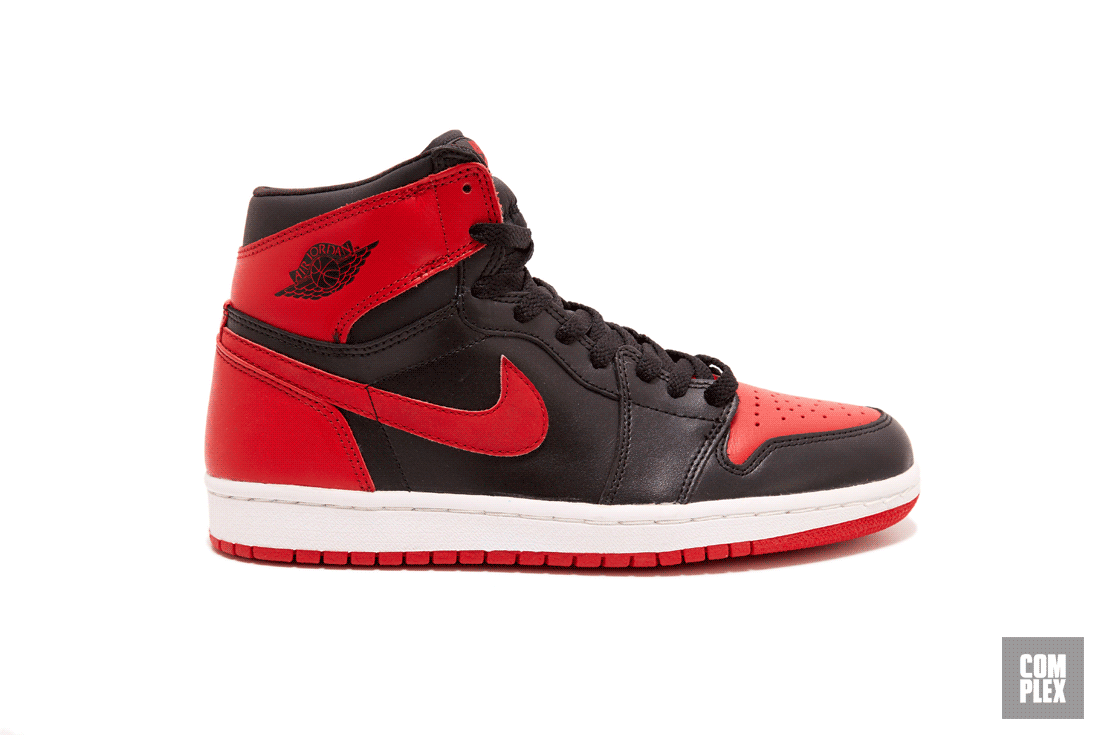
By the early '00s, retro culture had taken off, and officially taken over Jordan Brand—and it that hasn’t stopped since. Jordan’s earliest consumers had grown up with the brand, and they were hungry for the past; Jordan played into it, offering anything it could to make their sneakers feel like a collectible piece of history. They released the Air Jordan 1 in multiple colorways that year, each one a limited edition that came with a woven tag on the back of the tongue that was individually numbered. The "Black/Red" colorway was limited to 38,345 pairs and came with a “Retro Card” that spelled out the importance of the 1 to the Jordan Brand heritage, along with a chrome Jumpman that was connected to through the eyelets. From a material, pattern, and fit standpoint, the shoe was identical to the 1994. That means it, too, had a nubuck swoosh. It's also important to note that 38,345 is a very low volume. Take into consideration that the "72-10" Air Jordan XI last year had over one million pairs produced. In comparison, the 2001 Black/Red Jordan 1 barely made it to market.
2009
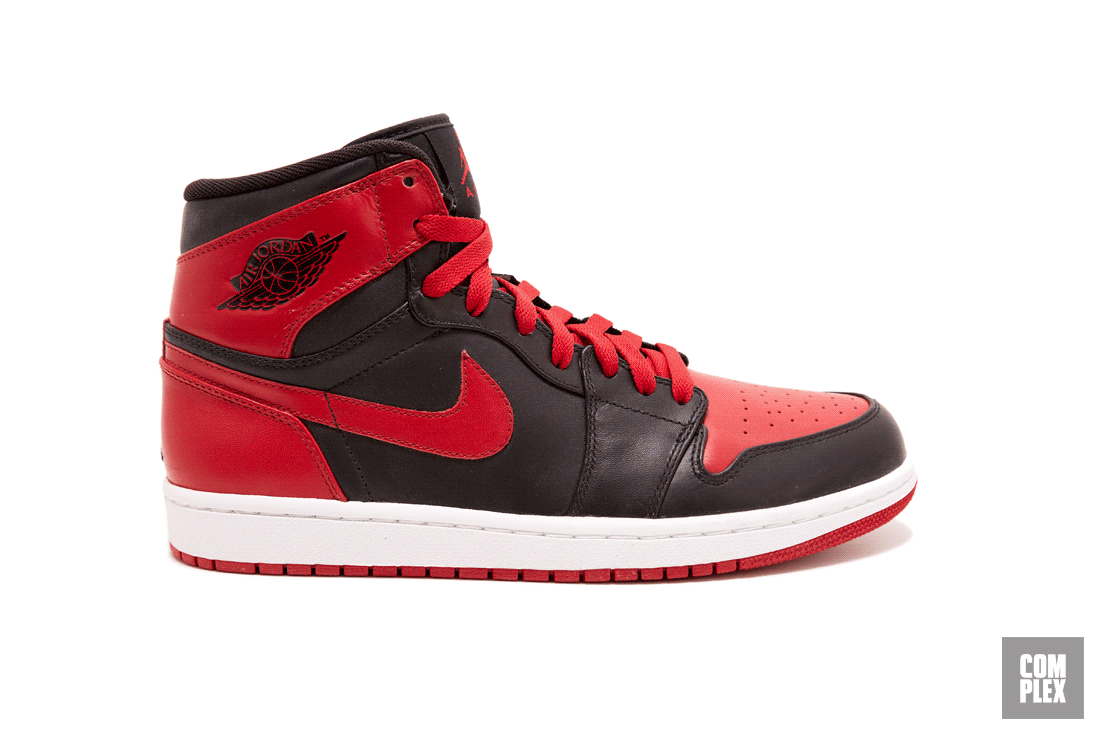
After eight years, Jordan brought back the black/red colorway as part of the “Defining Moments Pack,” meant to capture the historic night when Michael dropped 63 points on the Celtics in Round 1 of the 1986 NBA Playoffs. The pack also featured a "Black/Green/White" colorway that gave a nod to the Celtics. By many accounts, this is considered the worst of all of the Air Jordan 1 retros. The material quality just wasn’t there. The leather was completely smooth and had little to no grain to it. All of the overlaying pieces had rolled edges—the original had raw-edged leather. On top of that, the branding was astonishingly bad: The shoe featured a Jumpman logo on the heel and a woven tag with the Jumpman logo featuring "Air" written under it, as opposed to the logoless heel and the Nike Air woven tag on the original shoe. It didn’t do the original justice.
2011
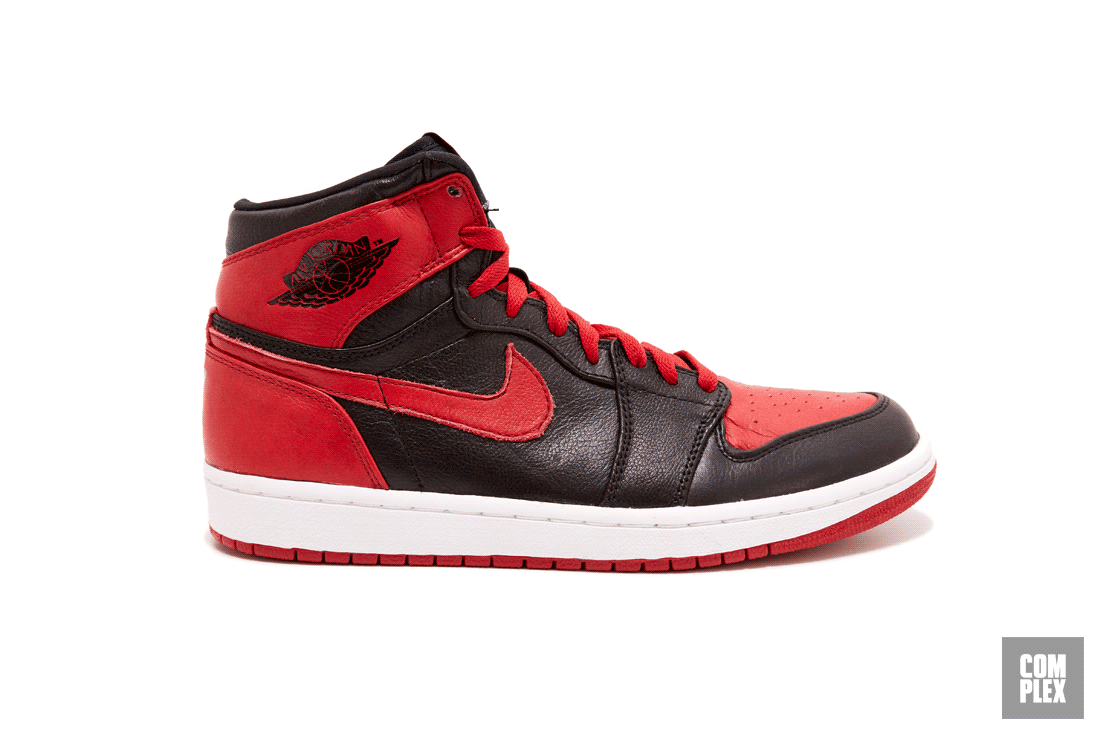
The brand commemorated the black-and-red colorway in a new way for summer 2011, embracing the “Banned” attitude. An “X” was added on the heel, a nod to the red X that came across Michael’s feet during the first Air Jordan 1 commercial. The shoe was otherwise barely distinguishable from the 1984 release. The materials were upgraded from 2001; the leather was much softer and the red tones were nearly identical to the OG. It proved you could add new life to a product without erasing what made it great in the first place.
2013
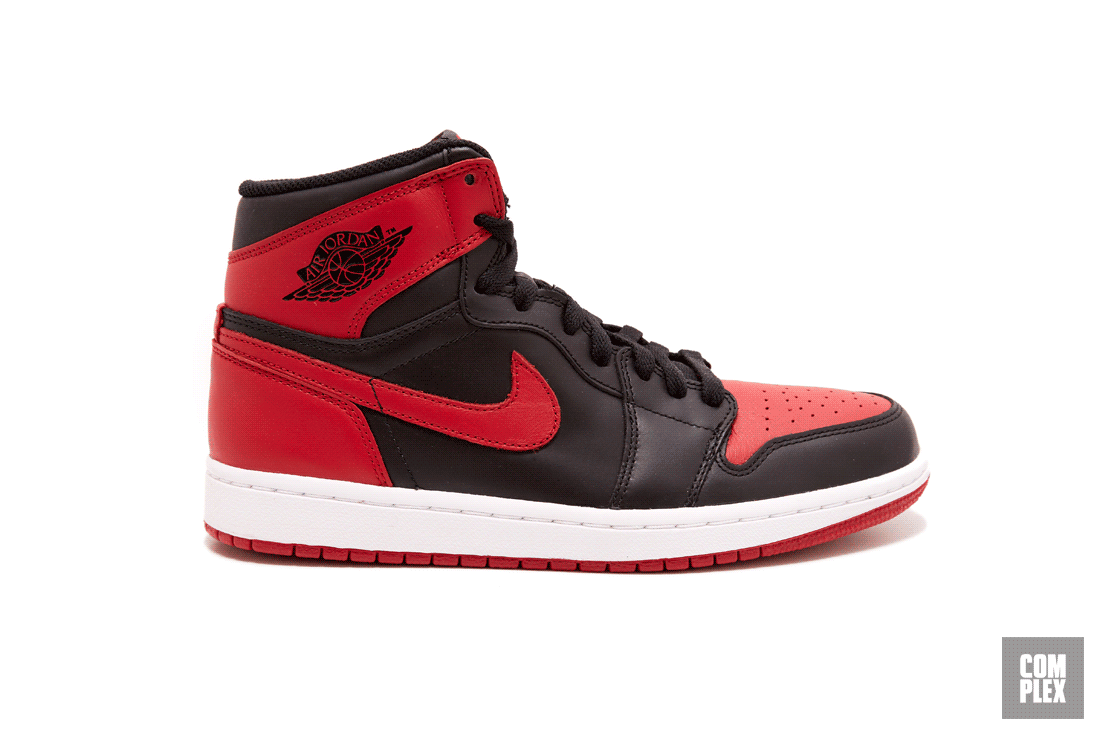
Close but not perfect is the best way to sum up the most recent retro of the black/red 1. The pattern, height, and fit were identical to the original, giving the shoe the right shape and stance. But it still featured smoothed leather, this time with a stipple grain, like the 2009 version. The leather was better quality, but it had a polyurethane coating. Polyurethane is typically used to fill in flaws in leather hide, like a bug bite or branding scar on the cow. It also affects leather's color, however. In this case, the polyurethane made the red leather a little brighter than the original.
2016
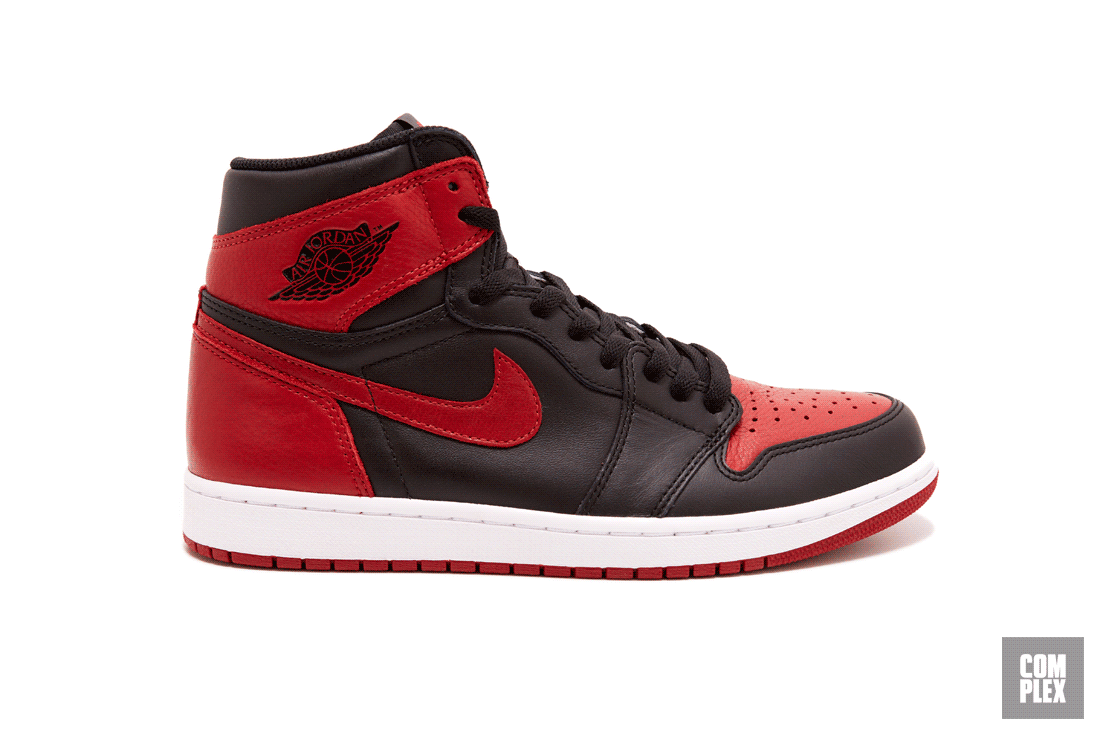
The gap in between Jordan 1 reissues was much shorter this time, thanks to Jordan Brand “Remastered” program. The goal of the program is to re-release classic shoes as close to their original form as possible.
Material-wise, the next best thing we've seen to this 2016 release of the Banned Jordan is the Shattered Backboard 1s from 2015, which featured a fully aniline leather upper in black, red and white. Aniline leather is notable for its natural tanning and dyeing process; it's not overly manufactured. You can see and feel the natural grain of the leather. When all of your favorite YouTubers inevitably say how amazing the Remastered 1’s quality is, what they are talking about is how smooth the leather feels—it's almost wet to the touch. Bad leather finishes dry and has no depth in its gran, primarily because it is covered in polyurethane.
The color on the Remastered black/red I is also created naturally. Natural dyeing absorbs more purely into the leather and gives it a richer color with more depth. It is hard to explain precisely, but if you look at the 2009 version, the color has a shiny gloss to it that doesn’t give the impression of high quality. That issue will be fixed on the 2016 rerelease.
The Remastered reissue is by far the best Air Jordan 1 we've seen in 31 years. It's dead-on to the original—no small feat for a company that has had its ups and downs with one of its most iconic shoes.

